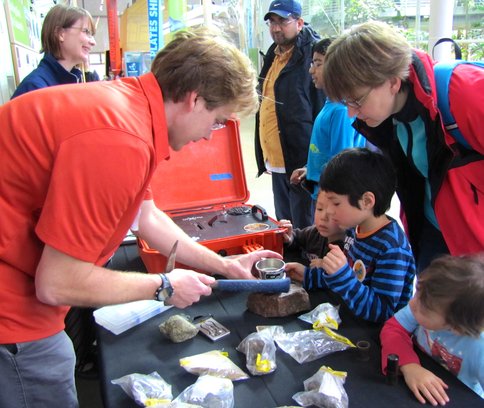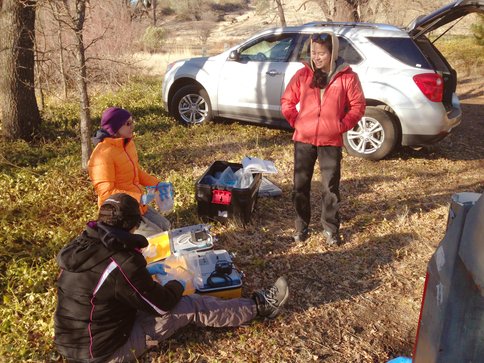2014 Annual Science Report
 NASA Ames Research Center
Reporting | SEP 2013 – DEC 2014
NASA Ames Research Center
Reporting | SEP 2013 – DEC 2014
Mineralogical Traces of Early Habitable Environments
Project Summary
The goal of our work is to understand how habitability (potential to support life) varies across a range of physical and chemical parameters, in order to support a long-term goal of characterizing habitability of environments on Mars. The project consists of two main components: 1. We are examining the interplay between physicochemical environment and associated microbial communities in a subsurface environment dominated by serpentinization (a reaction involving water and crustal rocks, which indicated by surface mineralogy to have occurred on ancient Mars). 2. We are working to understand how mineral assemblages can serve as a lasting record of prior environmental conditions, and therefore as indicators of prior habitability. This component directly supports the interpretation of mineralogy data obtained by the CheMin instrument on the Mars Science Laboratory.
Project Progress
Work in this project year focused principally on the serpentinite borehole observatories at McLaughlin Natural Reserve, which were established in project year 3. We completed sequencing and analysis of metagenomes from cored material and recovered well fluids, X-ray diffraction analysis of cored materials, and 18 months of seasonal monitoring. Additionally, we installed and recovered a first round of down-hole microbial colonization experiments, and conducted an initial suite of enrichment culturing experiments. Results were published in Frontiers in Microbiology and Scientific Drilling, and presented at the Tenth International Symposium on Subsurface Microbiology and the American Geophysical Union Fall meeting.
Publications
-
Crespo-Medina, M., Twing, K. I., Kubo, M. D. Y., Hoehler, T. M., Cardace, D., McCollom, T., & Schrenk, M. O. (2014). Insights into environmental controls on microbial communities in a continental serpentinite aquifer using a microcosm-based approach. Frontiers in Microbiology, 5. doi:10.3389/fmicb.2014.00604
-
Hoehler, T. M., & Alperin, M. J. (2014). Biogeochemistry: Methane minimalism. Nature, 507(7493), 436–437. doi:10.1038/nature13215
-
Houghton, J., Fike, D., Druschel, G., Orphan, V., Hoehler, T. M., & Des Marais, D. J. (2014). Spatial variability in photosynthetic and heterotrophic activity drives localized δ 13 C org fluctuations and carbonate precipitation in hypersaline microbial mats. Geobiology, 12(6), 557–574. doi:10.1111/gbi.12113
-
Lee, J. Z., Burow, L. C., Woebken, D., Everroad, R. C., Kubo, M. D., Spormann, A. M., … Hoehler, T. M. (2014). Fermentation couples Chloroflexi and sulfate-reducing bacteria to Cyanobacteria in hypersaline microbial mats. Frontiers in Microbiology, 5. doi:10.3389/fmicb.2014.00061
-
PROJECT INVESTIGATORS:
-
PROJECT MEMBERS:
David Blake
Co-Investigator
Tori Hoehler
Co-Investigator
Linda Jahnke
Co-Investigator
Richard Morris
Co-Investigator
Allan Treiman
Co-Investigator
Dawn Cardace
Collaborator
Mike Kubo
Collaborator
Niki Parenteau
Collaborator
-
RELATED OBJECTIVES:
Objective 2.1
Mars exploration.
Objective 5.3
Biochemical adaptation to extreme environments

